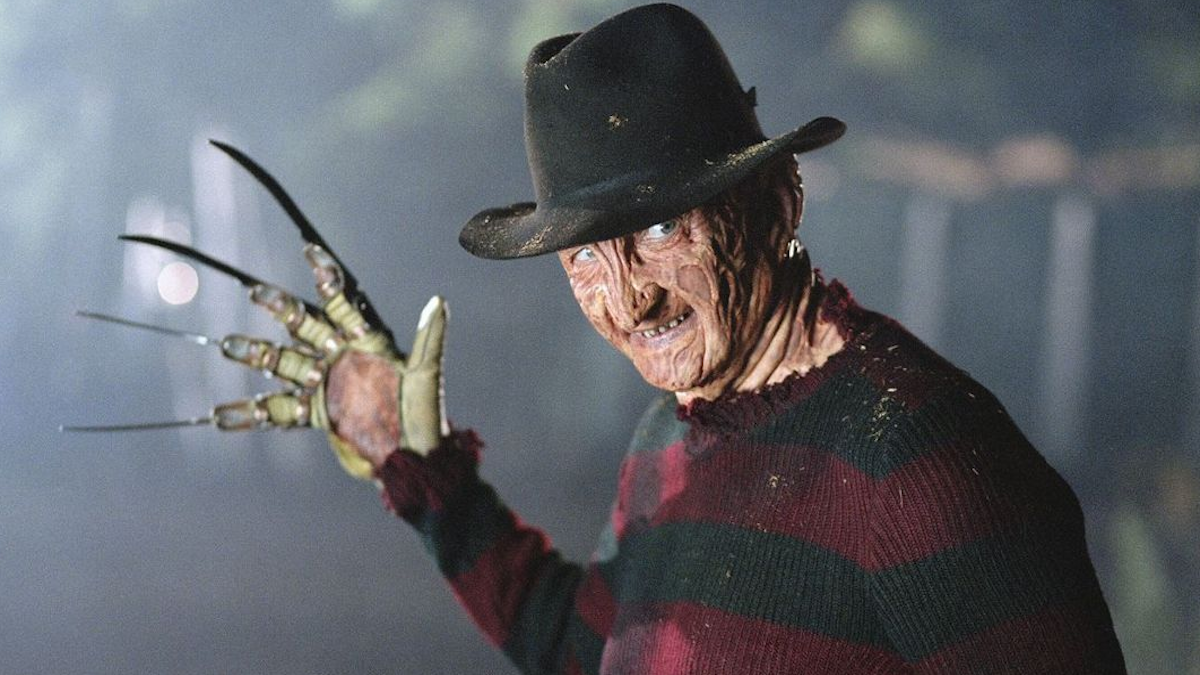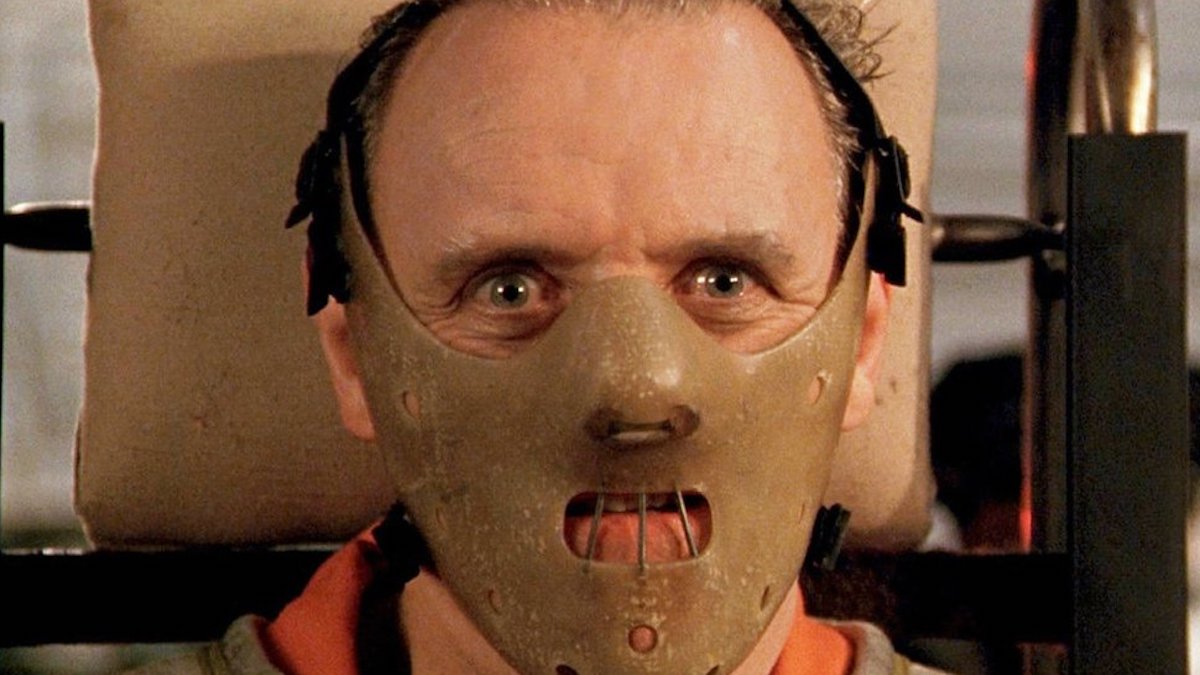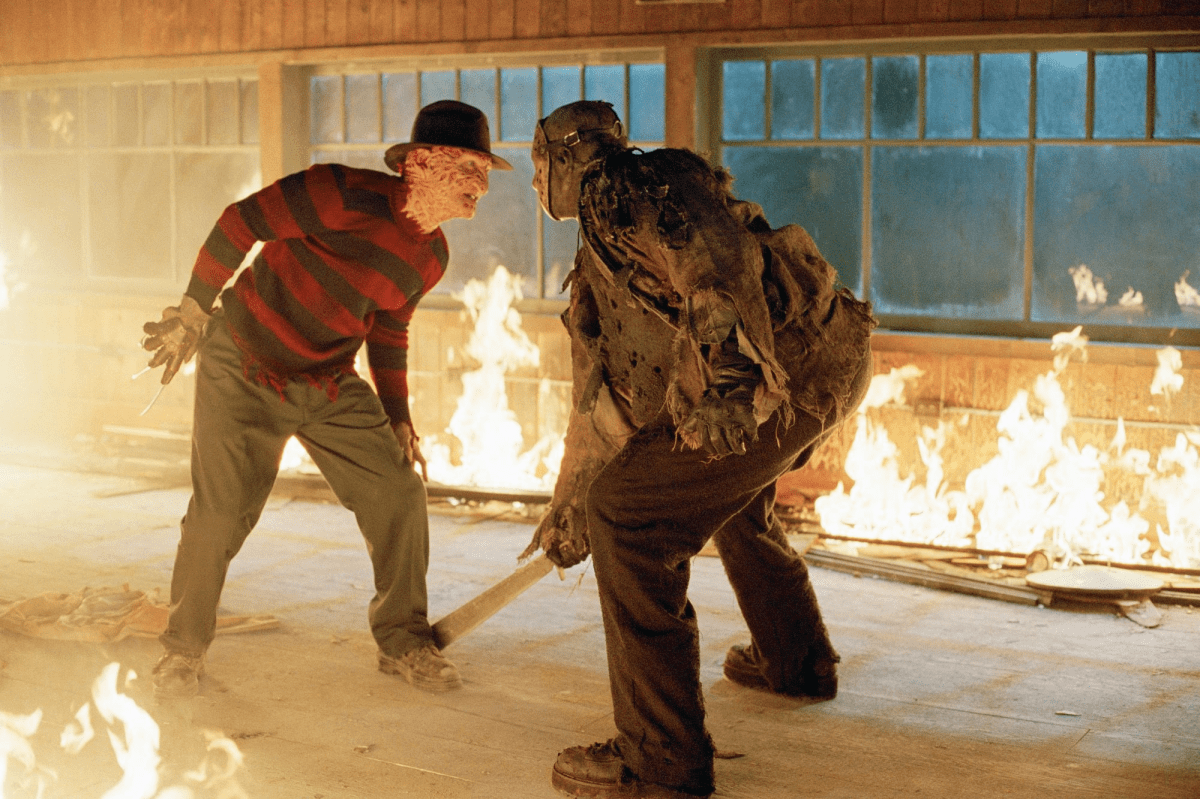Horror is pretty good at naming its sub-genres, so we all know what to expect. You know the architecture and arching menace you’ll find in gothic horror. You know that paranormal horrors are more likely to haunt your dreams. When you hear that Hostel is a torture horror, you might wince a bit. Among the most famous and popular of horror’s celluloid subgenres is ‘Slasher horror.’ Again, what happens within the genre written on the machete.
The term ‘slasher’ sprung up in the wake of John Carpenter’s definitive Halloween. That 1978 horror wasn’t the first movie to feature the rampage of a slasher killer — those roots stretched back to Thirteen Women (1932), through Psycho and Peeping Tom (both 1960), and 1970s Italian Giallo movies. But while those and other outliers like 1974’s Black Christmas are easy to recognize as slashers through the mask of the sub-genre, it was Carpenter who brought all the necessary elements together for the first time.
Making a slasher

What makes a slasher? First, you need the killer — the villain or antihero who’s the star of the piece. They spend most of the movie concealed, at least part of their personality or identity kept a mystery, and their appearances should be tied to suspense and surprise. Some have a sideline in one-liners, but most are menacingly quiet. Whether supernatural or not, it’s essential they last to the third act and beyond, so many are as unstoppable as they are threatening. Mayhem and gratuitous violence are the order of the day, and slashers are often linked to their mask, clothing, and preferred weapon.
Victims are crucial, and they usually outnumber the killers, certainly at the beginning of a movie, but no matter how many there are, they are weaker than their pursuer. For most of a film, a slasher killer has to hold the balance of power. Famously, victims are usually young and innocent until we see a vice that, as the thinking goes, reduces their chance of survival.
The staple of the Final Girl grew from slasher movies. As much as the killers are often male, the one who escapes, no matter how painful, tortuous or costly that escape is, is female. The Final Girl usually sits apart from other victims and draws on impossible reserves to escape and stop the killer in the final act.
But we’re not worried about the Final Girls in this ranking — this is about how many First Boys and Girls have met horror giants. Which of the slasher craze’s most famous killers has claimed the most victims?
Freddy Krueger, A Nightmare on Elm Street — 62 kills

Krueger broke the mold in several ways. A Nightmare on Elm Street claimed the supernatural style of classic horrors like Dracula and the Invisible Man for slashers. Unlike his rival killers, Krueger was less concerned about hiding his appearance — knowledge of him and his legend was crucial to his power in dreams. Krueger’s one-liners became zanier, and generally worse, as the franchise grew, accompanying scares and kills until Wes Craven’s New Nightmare dragged him into the real world.
Even when his remit grew beyond Elm Street, Krueger’s kill count was restrained, although he had the benefit of two series of a television show to top his numbers up. Including the reboot, the Springwood Slasher has stacked up just over 60 kills on screen.
5. Hannibal Lecter, The Silence of the Lambs / Hannibal — 90 kills

Thomas Harris’ menacing killer was always a higher class of slasher, even when he was more antihero during his later adult movie run or a slasher in the origin movie Hannibal Rising. Strategy and manipulation may be key, especially when locked up behind bars, but Lecter repeatedly showed that he was capable of sleek and effective slasher campaigns when needed. Just look at his brutal and bloodily cunning prison break in The Silence of the Lambs.
Across his high-profile movies, Lecter claimed 28 kills, with potentially hundreds hidden in his backstory. Add in the TV series Hannibal, and it leaps to nearly 100.
4. Chucky, Child’s Play — 120 kills

Visionary horror-crafter Don Mancini has built an impressive slasher franchise with his possessed doll on screens, large and small. Unlike many on this list, the serial killer reincarnated in a ‘good guy’ doll made diminishing returns one of his victims. The initial run of movies led to some impressively high-quality direct-to-video installments.
A cynical studio reboot was shown up when the franchise creator brought the doll to TV with an impressively high body count. Over seven movies and that unnecessary reboot, the doll and his bride Tiffany have amassed over 120 kills.
3. Michael Myers, Halloween — 160 kills

The protagonist of the Halloween series has a complicated kill count. He started low-key in 1978, amassing four kills on top of the murder of his older sister in 1963. That number rose to average double figures by the later films of his original series. Then, reboots took over, complicating things with multiple resets.
Shockingly, not everyone in Halloween: Resurrection met their demise on the end of his knife. The 40th-anniversary reboot trilogy wiped the slate, taking Myers’ kill count back to the first film’s five before the middle film Halloween Kills lived up to its name. The Shape took out 34 people in 2021 alone, and it might just take another installment to nudge him above an old rival.
2. Jason Vorhees, Friday the 13th — 164 kills

Jason was always pretty strong in the kills department. Favoring a machete but making use of all sorts of lethal instruments, Jason consistently hit double figures in his movies. Only a few details stood in the way. A surprising number of deaths are ambiguous, a muted reboot halted Jason’s impressive continuity in 2009, and the lumbering hulk wasn’t even the main killer in the first movie.
Still, the lumbering, hockey mask–clad killer stumbled from lost boy to supernatural sci-fi slasher while stacking up over 150 on-screen kills. In fairness, this list doesn’t consider the estimated 19,727 people and 4,955 animals killed when Jason’s rampage destroyed the space station Solaris in Jason X. They were just a bonus.
1. Pinhead, Hellraiser — 321 kills

Far on the supernatural side of the spectrum, the cenobites of Clive Barker’s Hellraiser may have to be summoned to claim their victims, but once they’re on a trail, they don’t easily give up. They also have many infernal ways of dragging their victims to Hell, including the popular chain hooks. While Pinhead and the rest of his loyal order were restrained during 1989’s Hellraiser, things escalated by the third installment six years later. Hellraiser III: Hell on Earth unleashed the Lead Cenobite on New York, where his first act of vengeance was to massacre every person in the nightclub, the Boiler Room. That was a slasher peak of 246 deliberate kills in one go, proving once again that Pinhead really doesn’t like to waste good suffering.

